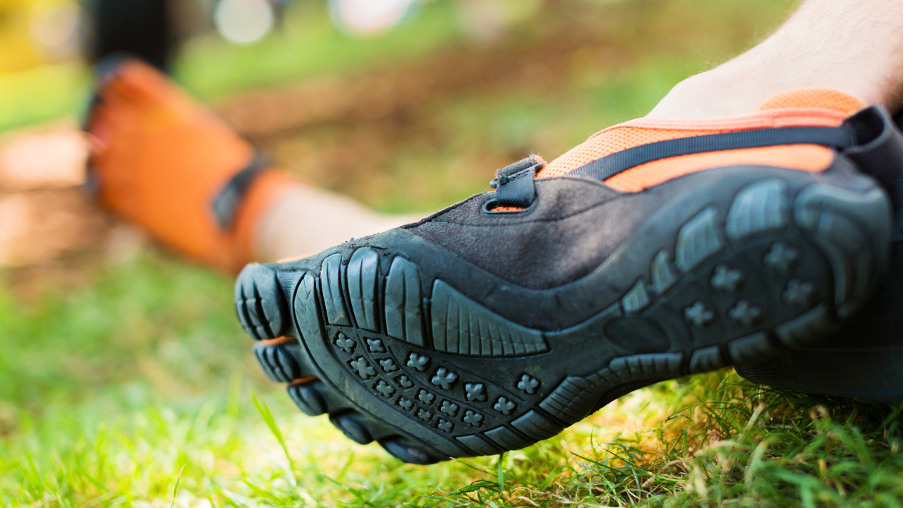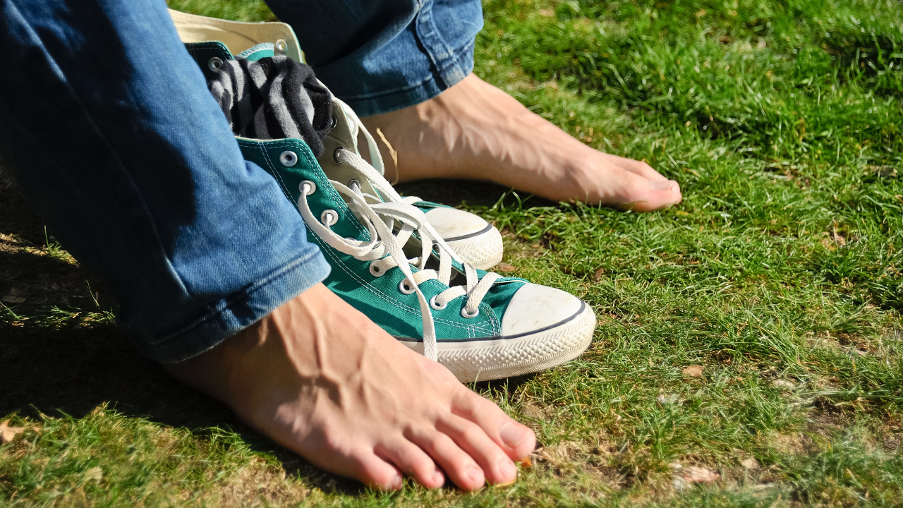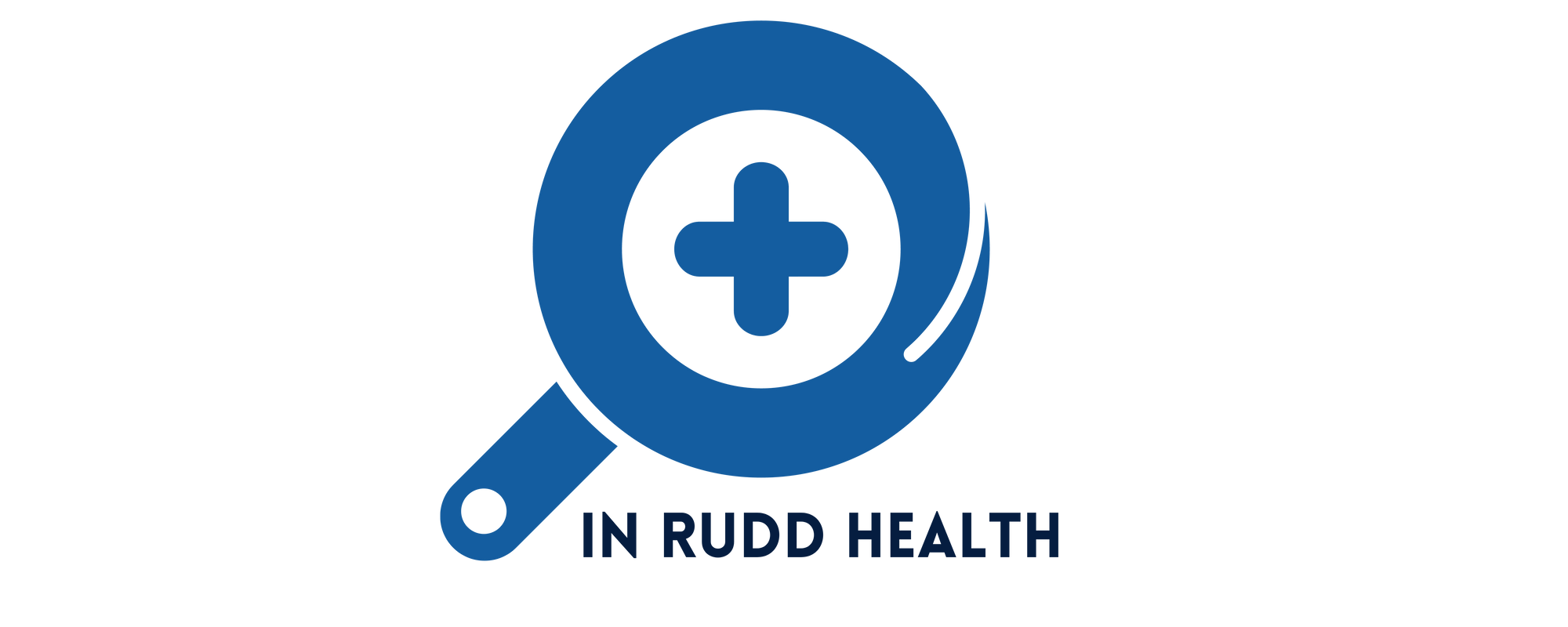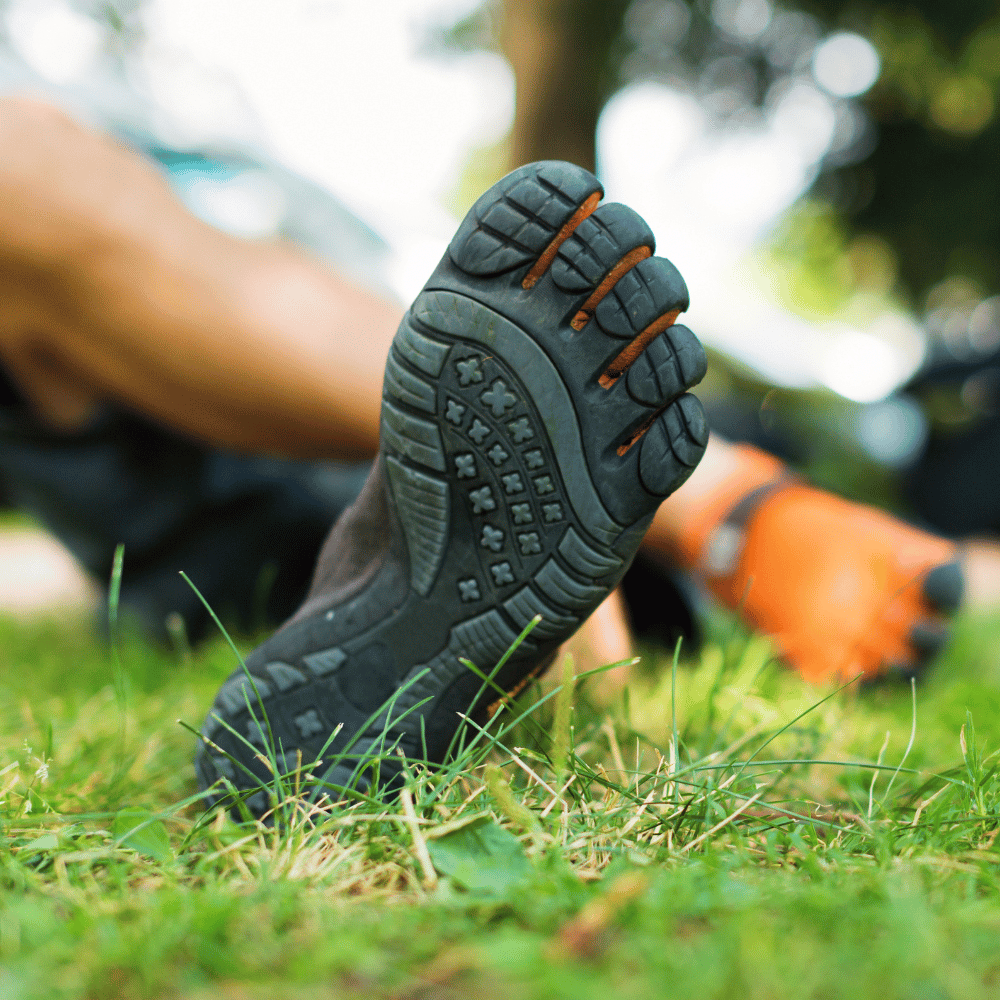
I've written about barefoot hiking shoes, kids barefoot shoes, barefoot shoes for toddlers and even barefoot sandals but lets take a step back and ask some bigger questions on why you might need barefoot shoes in your life.
Are you also tired of distressing your feet and calves muscles in regular heel-to-toe footwear and looking for some worthy pairs to relieve foot pain? Then cheer up, buddy, as we got the right solution to your problem.
Indeed, traditional running shoes with narrow toe boxes and thick soles are no less than a never-ending punishment to our feet and legs. Not only do they leave us with unbearable pain, but they also result in various deformities, alter the natural muscle alignment and gait, and ultimately result in reduced body balance.
However, since the introduction of barefoot shoes, life has become much more at ease. Their wide toe box, thin sole, and better pressure distribution help users relax the foot, better their posture by many folds, and improve proprioception.
And what can be a better proof of its effectiveness than the fact that Scott Jurek, America's ultramarathon runner, used to wear these minimalist zero-drop shoes?
Yearning to unfold more about these barefoot shoes and how they can turn out to be lucrative to us? Then quickly grasp a cup of coffee and jump to the next section!
What are Barefoot Shoes?
Barefoot shoes, or minimalist shoes, are a wide range of unique footwear that fit the foot's natural shape and allow maximum movement. These shoes are typically designed with the motive to mimic the feeling of being ground without making any compromises on your feet' protection.


In short, you can define them as shoes incorporating no extra stuff. These include arch support, orthotics, extra cushion and padding, insoles, and ankle support.
The reason that grants these minimalist shoes too much hype is their counter-healthy effects on the human body.
But before diving into the benefits of barefoot shoes, let's enlist some of the essential features of good barefoot shoe
Features of Barefoot Shoes
A few known features of a good quality barefoot shoe that help it stand out of the row are:
● Totally Zero Drop
Drop is generally defined as the distance between the slope of the toe and the heel. Traditional shoes are always half an inch above the ground, thus creating a drop.
However, in the case of a minimalist shoe, there is no difference in the height of heels and toes and, therefore, have no slope.
● Wide Box for Toe
Another feature of zero-drop shoes is that, unlike traditional shoes, which have a slim and small toe box, they have a large, wide toe box. This helps the toes flex and freely move, expand, and retract under different situations.
● Thin Sole
Minimalist shoes have a very thin sole and hence help maintain a low stack height (mostly less than half an inch even). These thin and flexible soles improve the ground feel.
● Asymmetrical, Natural Foot Shapes
Barefoot shoes are made in a shape that fits our feet' natural shape and curves rather than forcing them into an unnatural shape.
Why Buy Barefoot Shoes? 13 Scientifically Proven Benefits to Eye On!
Now that you are well abreast with the features of the barefoot cleats, now it is the right time to go through some of their benefits and let them further amaze us.
Let it be about aligning the natural foot curve or supporting the Achilles' tendons; these specially designed barefoot shoes know how to do their job.
So, now, let's unravel the reasons behind its hype.
● Helps Relieve Foot Pain.
A common problem people encounter after wearing flat shoes or joggers for hours is that their feet swell and hurt due to fascia inflammation.
Fascia is a thick connective tissue that surrounds all the organs, thus providing support to bones and muscles.
A thick connective band called plantar fascia in the foot supports all the muscles, tendons, and, ultimately, the arch too. Ordinary shoes are known to restrict foot movement. Moreover, they are known to alter the natural gait.
This results in less support to some critical foot areas, and thus all ultimately sends shock waves in the body.
However, barefoot shoes don't force the foot into a certain shape. Rather they are known to hug and stick by the natural curve of legs and feet.
- Conform to all foot shapes and deformities equally
- Allow more natural movements through better alignment
- More added support
- Allows foot to flex freely
- Improve blood circulation.
Resultantly, the feet don't swell up, the fascia layer doesn't tighten, and one experiences no shock waves. Moreover, the Achilles tendons and intricate toe bones are in a relaxed posture, without any strain.
● Improve Posture
These light, zero-drop footwear improve your foot blood circulation and help relieve extensive foot pain; its wide toe box, and low elevation, are known to improve one's posture and balance.
And in the current era, where every one in four people face severe back pain due to bad body posture, it works no less than a miracle.
Where elevated shoes strain and shorten your calves, this barefoot footwear has no such negative effect. Instead, the thin zero elevation sole helps to improve body protrude and proprioception.
Various proprioceptive nerves are located on the downside of human feet. These nerves send a sensory feedback loop to your brain about body posture and balance.
These zero-drop footwears have thin soles, allowing one to feel more grounded. Consequently, the proprioceptive nerves send more sensory information to the brain and help better understand spatial coordination and body balance. Moreover, since no slop exists in these no heel-to-toe drop shoes, comparatively less strain is put on the lower body. Instead, it is known to hug the natural body curves.
Many users report betterment in the knee and joint pains after transitioning to these thin-sole, squishy pairs.
● Strengthens Your Leg and Foot.
Human biomechanics support that is wearing barefoot shoes strengthens the leg and foot. Want to know how?
As mentioned above, this footwear improves the feet' flex and allows them to move more naturally. This leads to optimal alignment in the body and better body weight distribution. This ultimately helps the body's muscles and bones to move more cohesively, thus strengthening the leg and Achilles' tendons.
Moreover, these shoes promote the forefoot strike pattern that:
● Reduces the impact on joints
● Improves stability and balance
● Enhance foot strength.
It is one of the prime reasons why most athletes and runners prefer to wear zero-drop shoes.
● Burn More Calories While Running
Although these squishy shoes help propel your feet forward with every moving step, the case isn't the same when running. The reason is that the unique design of barefoot shoes encourages natural gait.
As a result, you are left with no automatic propelling spring in your step, and therefore, you will have to put in extra effort and energy to move your body forward. Moreover, more body muscles need to be activated than in sneakers and other traditional shoes.
Lastly, a few studies claim that walking, running, and exercising with barefoot shoes increase your heart rate and oxygen consumption more than in traditional shoes.
So, let it be the first running step or the last toe-off; your internal energy and bringing power combine and contribute to higher calorie burn and increased body metabolism.
● Gives More Wiggle Room to Toes
Have you ever experienced the disservice and pain of pinching your toes in wrongly sized shoes? Indeed, the stress put on the phalanges can hardly be described.
However, by wearing barefoot shoes, the scenario is the opposite. They provide enough room for the toes to wiggle about and thus don't compress them.
Now, you might be thinking, why is it so important to provide ample space to these tiny toes too? Here are a few reasons.
- Proper toe alignment prevents issues like hammer toes and bunions.
- More space allows natural movement and hence provides more flexing space. This helps to distribute weight better and reduce stress build-up on muscles and joints.
- Adequate space for toes results in proper blood circulation through all the nerves and blood vessels.
- Allows them to grip the ground better, thus reducing the risk of falling or getting injured
● Even Weight Distribution
A common problem addressed while wearing different shoes is that it feels like our feet carry all the body weight and, therefore, start aching soon.
However, with barefoot shoes, such problems come to an end. These minimalist shoes are extremely lightweight and flexible, and they help to distribute weight evenly in the following ways:
- thin soles that help to distribute pressure throughout the foot framework
- A wide toe box that allows the toes to freely splay out, thus reducing pressure built up at any specific area
- Zero Drop elevation allows all the muscles, bones, and phalanges to sit naturally in their position.
● Reduces Chronic Pain
Simple traditional shoes or heels often leave our legs and back with chronic pain that takes days to subside.
However, no such problem is encountered while wearing minimalist footwear. Specifically, running turns out to be hard on joints, and if we choose the wrong pair of shoes, the situation worsens.
However, athletes and top world runners claim that the thin soles of barefoot shoes have less cushion. As a result, they help us achieve forefoot strikes and thus allow us to land on balls rather than toes and ankles.
Now you must be thinking, what is so special about landing on balls?
When you land on balls, the Achilles tendons and calves muscles act as springs, absorbing most of the shock impact. Moreover, its forefoot striking allows the body to move more streamlined manner.
So, why not buy and enjoy a more comfortable lifestyle?
● Improves Foot Flexibility
Are you a travel lover who loves traveling across different types of terrains but can't bear pain waves? Then gear up as the barefoot shoes know how to help you.
These shoes offer extra stability, ground grip, and weight distribution. These attributes combine with barefoot shoes' grippy nature, making them a great choice for moving on uneven surfaces.
A rough thought is that these shoes are flexible enough to allow you to move on all surfaces, whether wet, muddy soil or hard, uneven rocks and hills.
● Helps Restore Natural Gait
A common problem when running with traditional shoes is their extra cushioning effect. It alters the natural gait of humans and also results in heel inflammation. The cushioning effect of these shoes masks the stress buildup. However, the landing is done on heels instead of balls and thus absorbs moisture.
However, as we discussed in the features of barefoot shoes, they have zero drop elevation and land squarely on the land.
Moreover, they shorten the stride. These two factors allow humans to land on their midfoot or ball, thus promoting the natural human gait.
A benefit of landing in balls is that your arch faces most of the shocks, and since they are the shock absorbers naturally, it helps to attenuate discomfort and pain as much as possible.
Secondly, barefoot running shoes improve walking efficiency by increasing your body's forward momentum.
● Connects to Nature
The liberating feeling of moving barefoot on the ground is indeed matchless. You feel free from the commitments of the world and loads of work. Instead, the feeling of peace and joy conjures up. However, walking barefoot is not safe as far as foot protection is concerned.
And when we wear traditional shoes, the natural feel dies out.
However, barefoot shoes lie somewhere in between. Their exceptionally thin soles help you feel grounded and connected to nature. Yet they have enough sole to offer protection from the surrounding.
● Lighter to Wear
Where wearing traditional, heavy shoes poses a stain on foot and leg muscles, lightweight barefoot shoes got no such problem.
Some of the known disadvantages associated with wearing heavy shoes for an extended period are
- Difficult in the maintenance of balance and distribution of weight
- Strain legs, resulting in soreness and muscle stiffness
- Limit the range of movement, thus resulting in reduced motion
- It can cause calluses and blisters
However, by carrying light barefoot shoes, all these risks get nullified. They are exceptionally lightweight and comfortable to wear, thus allowing a more natural and wide range of body movements.
These shoes are soo light in terms of their weight that people often feel as if they aren't wearing anything, and therefore, it help do all the activities a bit faster e.g., fast running and walking.
Moreover, a few studies report that these lightweight shoes also improve breathability and traction.
● Relieves Back Pain
Another sound benefit of wearing barefoot shoes is that they help eliminate back pain often induced by wearing wrong-fitted, high-sole shoes.
Those shoes force the heels to rise above the feet balls. As a result, the pelvis tilts forward, and the spine is forced into an unnatural curve. This adds strain to the lower body, thus resulting in extreme back pain.
However, when wearing barefoot shoes, no such problem is encountered, nor is there any change in the natural alignment of the spine and pelvis muscles. Instead, these shoes promote a natural, streamlined alignment.
Consequently, no extra stress is posed on the back; hence, no extra pain is experienced.
● Correct Foot Deformities
Although not all deformities can be treated by wearing barefoot shoes, some foot conditions can be treated. These include:
- Wide and roomy toe box reduces pressure and thus prevents them from getting deformed.
- Flexible sole supports and strengthens the foot muscles and, therefore, helps reduce pain associated with plantar fasciitis.
- These soles also provide arch support and are extremely helpful for people with flat feet and overpronation.
All in all, the flexible, thin sole of barefoot shoes, their roomy toe box, and zero drops offer various health advantages to the human body that we are unaware of.
So, why not get yourself a pair of these minimalist shoes and add ease to your lifestyle?
A Few Known Disadvantages
Now that we are well up with the benefits and perks of barefoot shoes, let's find out if they have some downfalls, too or not.
So, some of the potential disadvantages of barefoot shoes to consider are
● Since these shoes have far less cushion than supportive and medicated footwear, people might initially find it uncomfortable and hurting.
● It doesn't offer much protection against rocks and other sharp objects. The reason is that it is a thin, flexible sole.
● They often become saturated with sweat, resulting in an unpleasant odor. Therefore, keeping the shoes clean and dry is necessary to prevent such hygiene issues.
Can You Wear Barefoot Shoes Daily?
Yes!
We can wear barefoot shoes daily. They help to rehabilitate our feet and leg muscles. Moreover, it helps to impart natural gait and posture.
However, transitioning from traditional shoes to barefoot can take time. You can start by wearing barefoot shoes for 30 to 40 minutes daily and gradually increase the time over several weeks.
Moreover, it is important to choose the right type of barefoot shoes. For example, some are designed for daily users, some for running, and others for hiking.
Difference between Barefoot Shoes and Traditional Shoes
Although both barefoot and traditional shoes offer protection to our feet, their composition and style make the two categories differ. A few known differences are:
|
Features |
Barefoot shoes |
Traditional shoes |
|
Sole |
Thin and Flexible |
Thick |
|
Toe box |
Wide and roomy |
Thin, narrow, and compressed |
|
Flexibility |
Highly flexible |
Less flexible |
|
Durability |
More Durable |
Wear out rapidly |
|
Heel Drop |
Zero heel drop |
0.5 inch or greater heel drop |
|
Cushioning Effect |
Less |
More |
|
Balance |
Improves body balance and posture |
Reduces balance and alters natural
body gait |
Final Verdict
To cut the long story short, barefoot shoes are one of the best footwear options to switch to. Their unique design, like thin soles, wide toe box, and less cushioning effect leave humans with dozens of advantages.
These include a reduction in back pain, strengthening of legs and foot muscles, more calories burn, and better body posture. The reason is that the thin sole and wide box force the body to move in the natural gait.
However, the only problem is that these pairs of shoes offer less protection against sharp surfaces and can emit unpleasant odors if not maintained properly.
So, what are you waiting for? Brace up and go to the nearest stores to book your minimalist shoe pair, and add ease to your lifestyle!
Frequently Asked Questions (FAQs)
Q.1 Do Barefoot shoes actually make a difference?
Yes!
Wearing barefoot shoes makes an obvious difference in one's lifestyle. Since it encourages natural body gait and lets users land on their balls, it strengthens the foot and leg muscles, reduces knee and back pain, and prevents foot inflammation.
Q.2 Can you wear barefoot shoes with socks?
Yes!
You can wear barefoot shoes with socks. However, it is recommended to wear lightweight, non-restrictive socks.
Q.3 How to choose the right barefoot minimalist shoes?
The right way to choose perfect fitting barefoot shoes for yourself is to buy a 0.2 to 0.5 cm wider shoe than your foot. Also, check the shoe's flexibility by bending it from toe to heel, and see if it bends easily or not.
Moreover, the heel and toe of the barefoot shoes should fit like a glove (snug fit).
Moving to the soles, it is better to start with barefoot shoes with thick soles and then shift to thin ones after getting used to wearing minimalist shoes.
Q.4 What is the scientific link between barefoot shoes and muscle strength?
Scientific studies have shown that foot muscle and strength increase after wearing and walking with minimalist shoes for eight weeks. The reason is that these shoes remove the cushioned heel and arch support that is present in traditional shoes. As a result, the muscles and tendons are made to work harder, resulting in increased strength.
Meta Description
Are barefoot shoes good for humans? Yes, they offer various benefits to the human body by forcing it into a natural gait. Check here to learn how wearing barefoot shoes promotes various health benefits.


